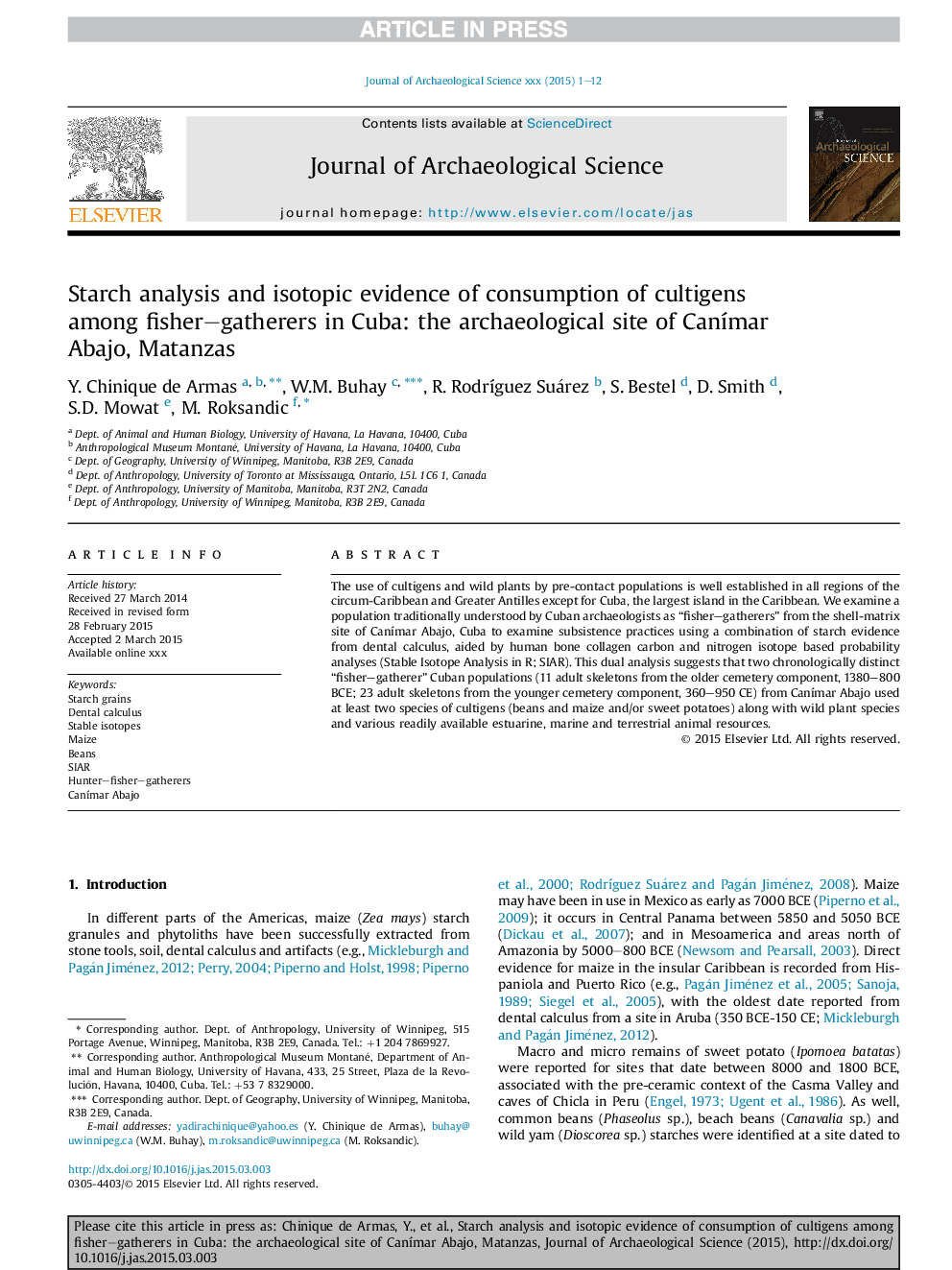| Article ID | Journal | Published Year | Pages | File Type |
|---|---|---|---|---|
| 7441902 | Journal of Archaeological Science | 2015 | 12 Pages |
Abstract
The use of cultigens and wild plants by pre-contact populations is well established in all regions of the circum-Caribbean and Greater Antilles except for Cuba, the largest island in the Caribbean. We examine a population traditionally understood by Cuban archaeologists as “fisher-gatherers” from the shell-matrix site of CanÃmar Abajo, Cuba to examine subsistence practices using a combination of starch evidence from dental calculus, aided by human bone collagen carbon and nitrogen isotope based probability analyses (Stable Isotope Analysis in R; SIAR). This dual analysis suggests that two chronologically distinct “fisher-gatherer” Cuban populations (11 adult skeletons from the older cemetery component, 1380-800 BCE; 23 adult skeletons from the younger cemetery component, 360-950 CE) from CanÃmar Abajo used at least two species of cultigens (beans and maize and/or sweet potatoes) along with wild plant species and various readily available estuarine, marine and terrestrial animal resources.
Related Topics
Physical Sciences and Engineering
Materials Science
Materials Science (General)
Authors
Y. Chinique de Armas, W.M. Buhay, R. RodrÃguez Suárez, S. Bestel, D. Smith, S.D. Mowat, M. Roksandic,
